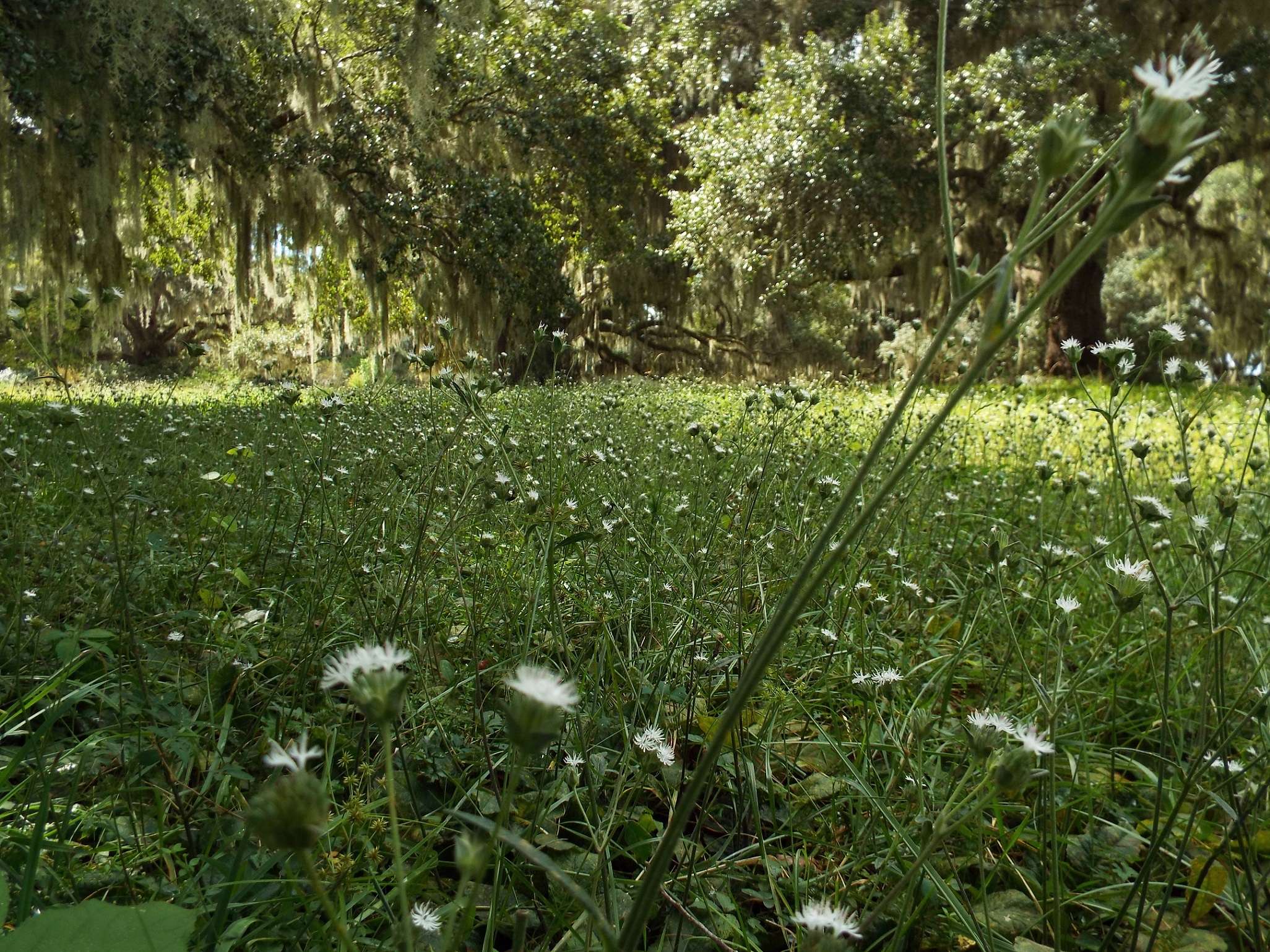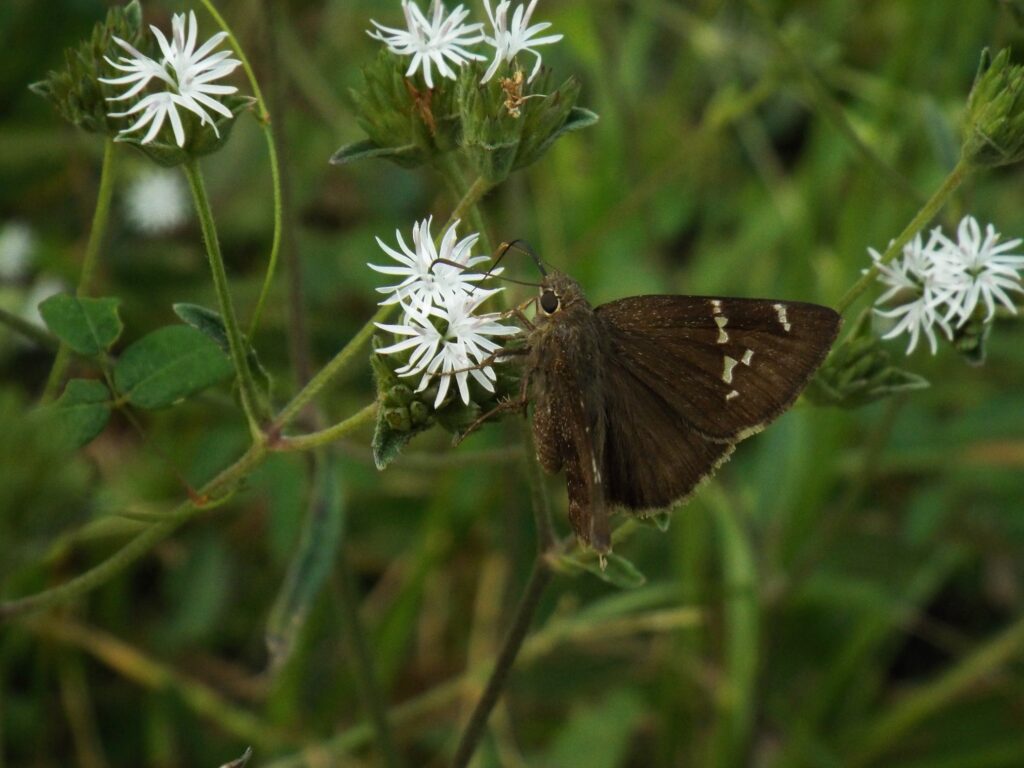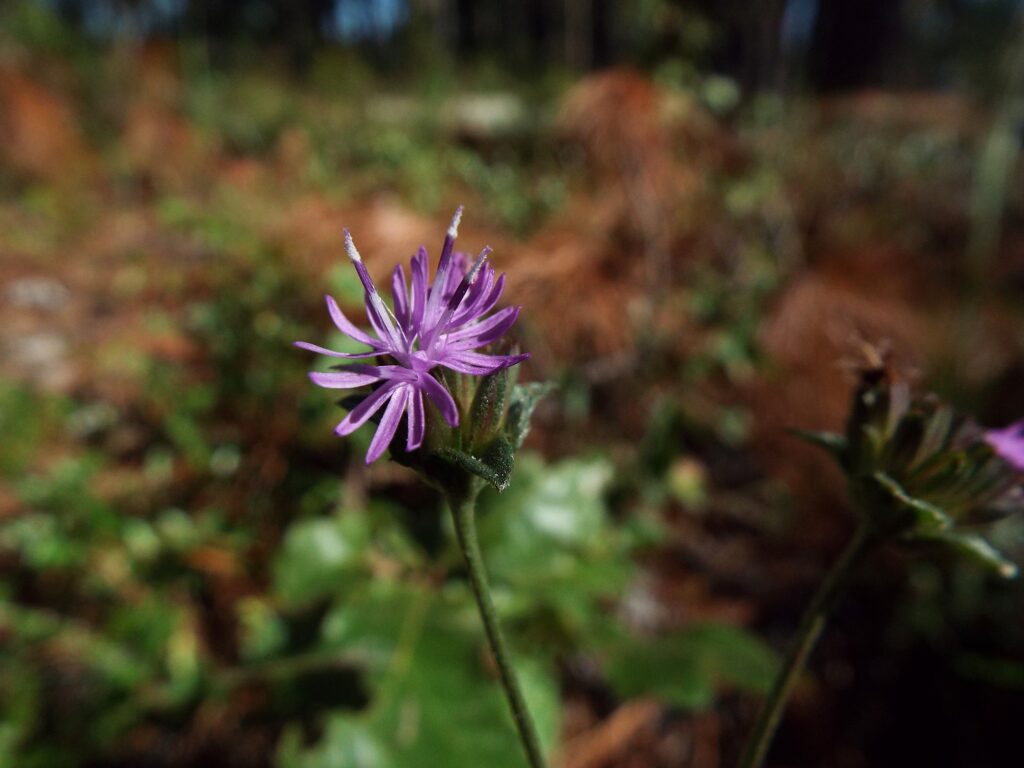


This week for Flora and Fauna Friday we have an easily over-looked wildflower, Wooly Elephant’s-Foot (Elephantopus tomentosus). We have four species of Elephant’s-Foot on Edisto but all are so similar in appearance that it’s easiest if I just speak about our most common species.
Wooly Elephant’s-Foot is a low growing perennial that loves well drained soils and heavy shade. You’ll most often find it growing on wooded ridges and along roads or trails under a canopy of hardwoods. It does best in barren or thinly vegetated areas where there are frequent patches of bare soil. Its large, tear-drop leaves drape the surface of the soil to form a basal rosette the size of a dinner plate. Each leaf is about eight inches long and covered in a layer of fuzz. In ideal conditions, the species can be quite prolific and blankets the ground in an evergreen quilt. The species will also make its home in shady lawns between the stems of St. Augustine Grass.
In late summer thru to fall Wooly Elephant’s-Foot blooms, extending a thin, forked stem one to two feet above the ground. Each tine is capped by a cluster of flowers. The flowers of all species are typically pink or magenta but some are pure white. Each flower has five petals that are skewed to one side, giving the impression of an open hand. Each flower is either discrete from one another or in clusters of up to four. These flowers are adored by pollinators from all walks of life. The unique combination of features from this flowering plant come together to make its nectar accessible to both the smallest of flies and the largest of butterflies. Stiff stems and broad clusters allow Giant Swallowtails and Southern Plains Bumble Bees to perch whilst they frantically gulp down nectar. All the while their short flowers with a broad mouth offer quiet dining to even the smallest of Hoverflies and Flower Beetles. It’s rare for one nectar plant to be so universally agreeable. Most plants specialize in some aspect for a particular group of insects but Elephant’s-Foot is hospitable to all six-legged critters.